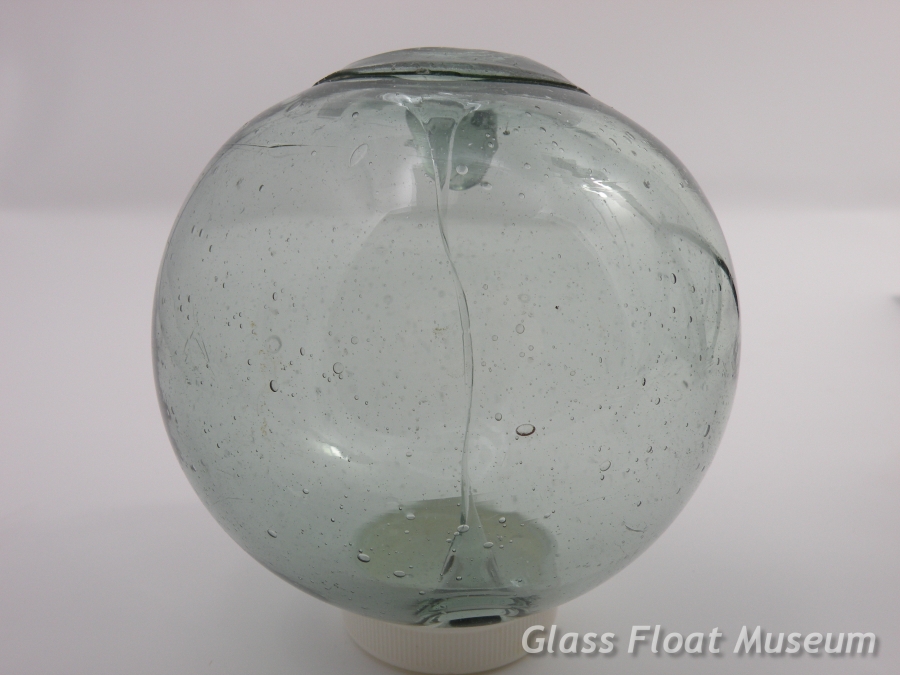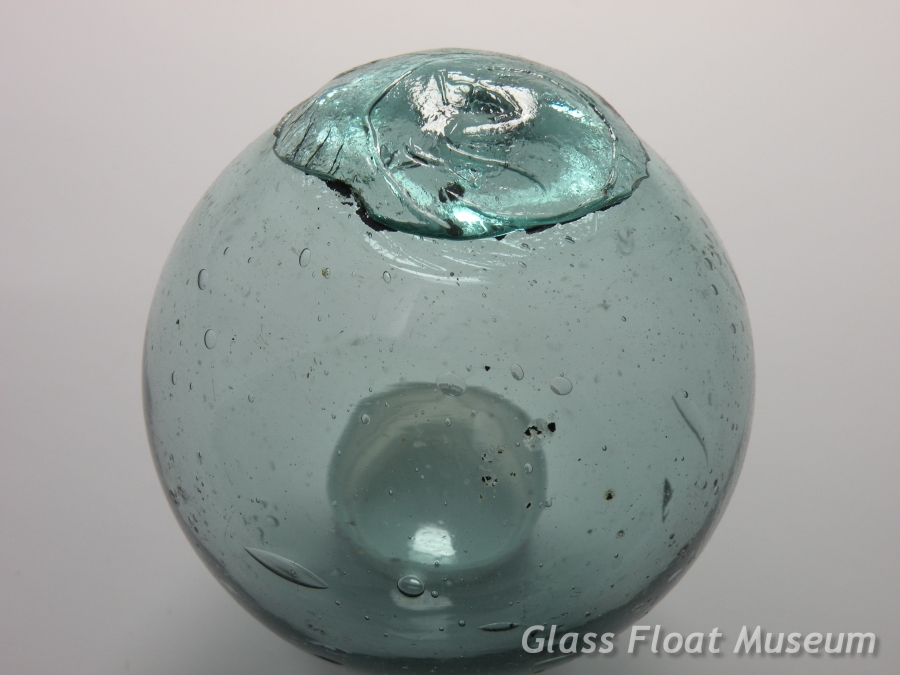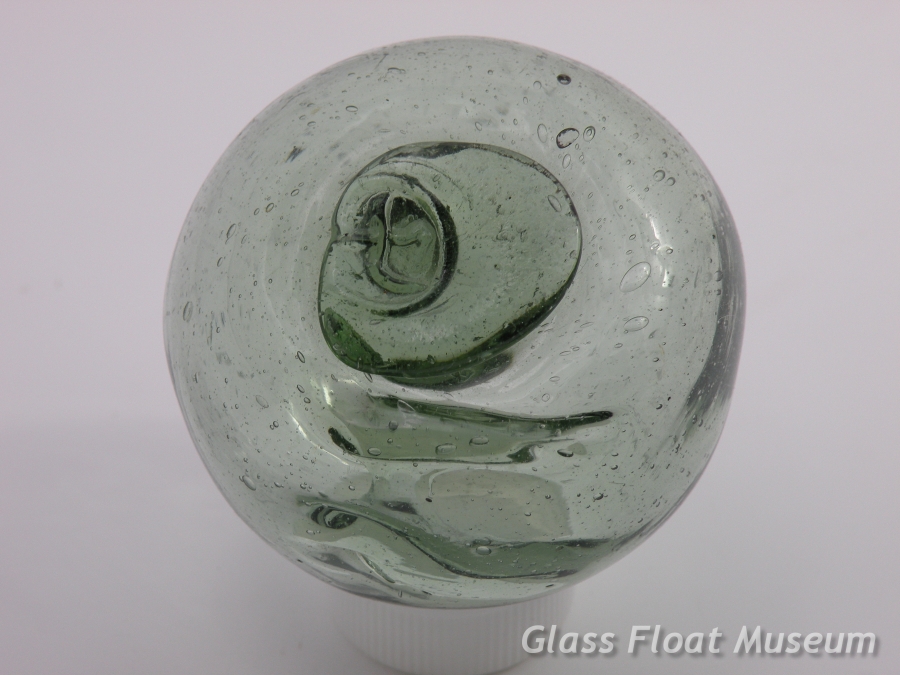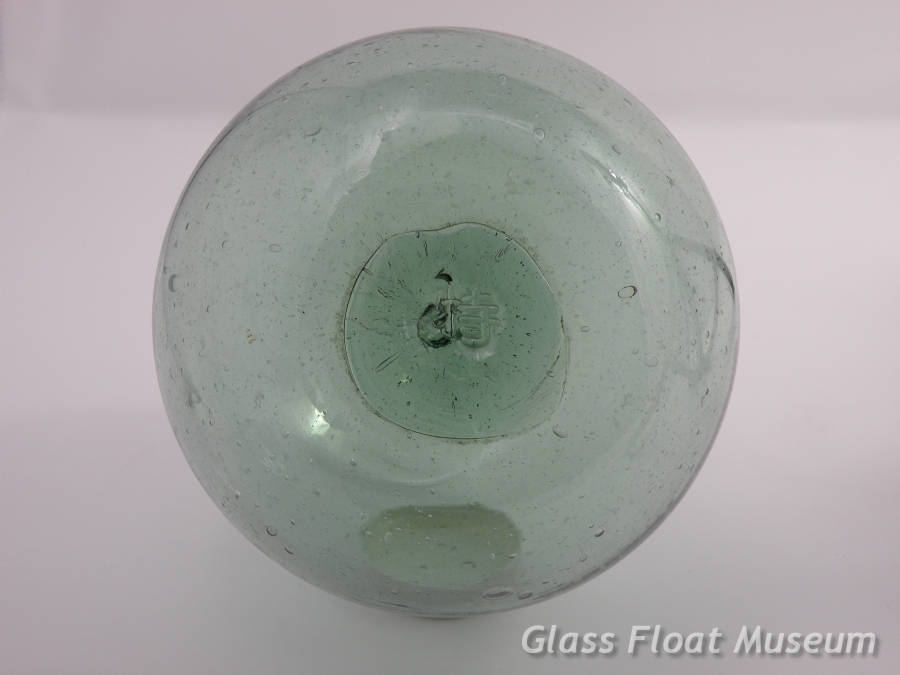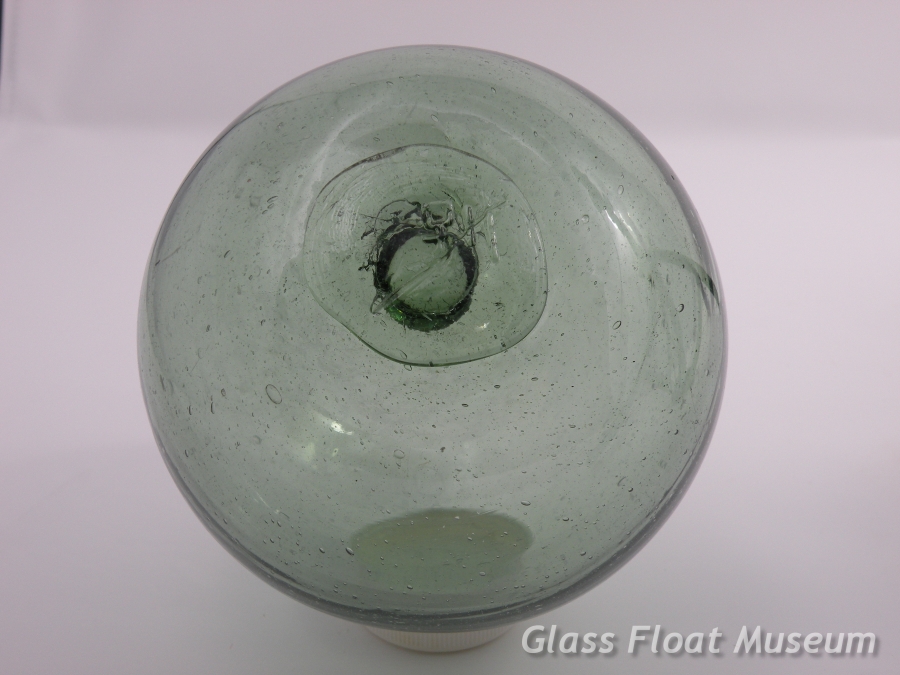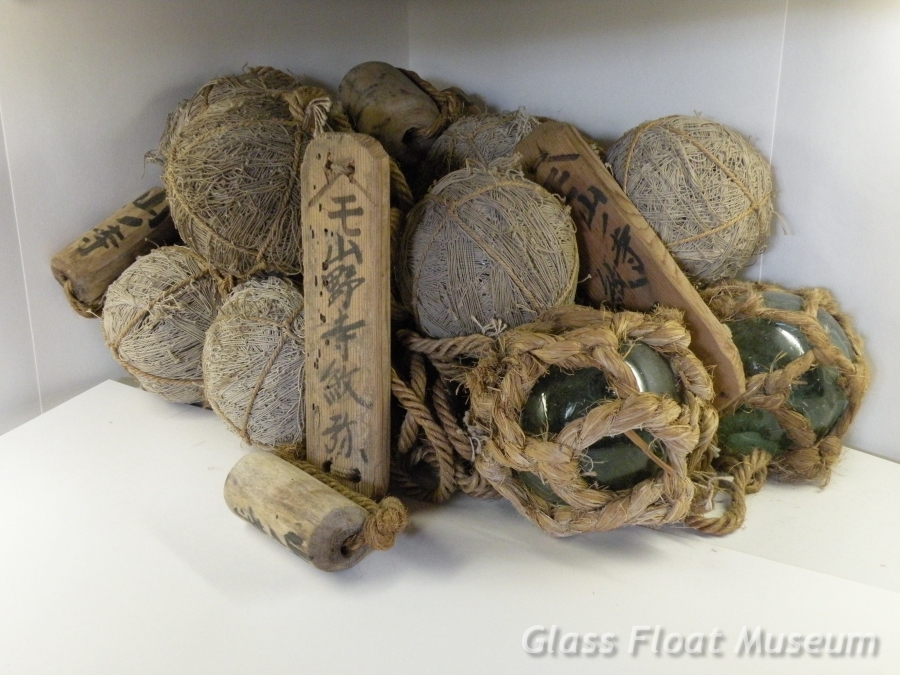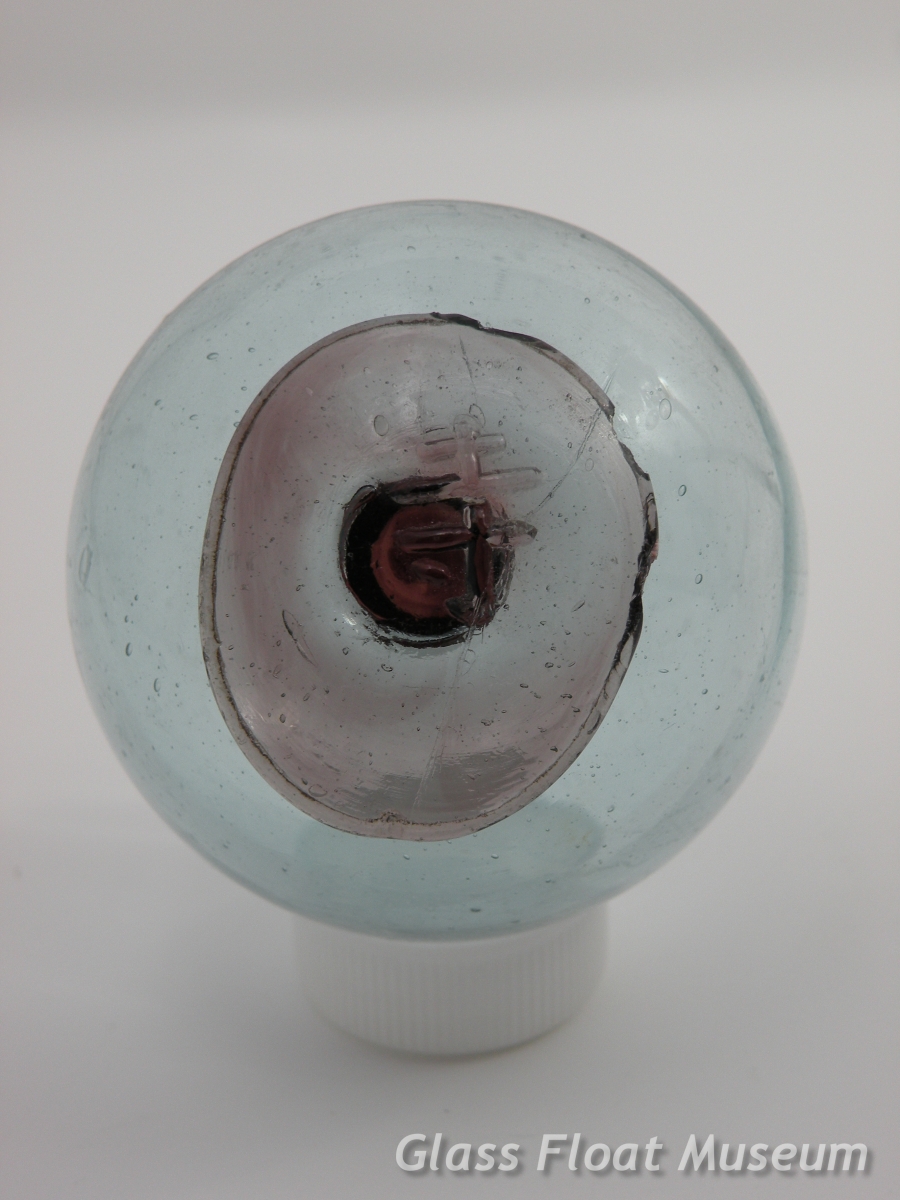
Keith Glein
Beautiful Ribbon Spindle that's on the thinner side but twisting ribbons spindle are truly special.
This 4 1/4 inch float was found on Hokkaido Island, Japan.
This float is stamped with a newly verified maker's mark. By 'newly verified', I mean that two floats with the same mark have been found. I've got one and I've been told that the author of 'Glass Ball Marks' has the other.
The mark itself is comprised of two distinct parts inside of two semi-circles that don't quite meet to form a whole circle. One of the inside parts looks like a single wiper on a windshield. Below that are a couple of long wavy lines.
These floats were found in Japan in 2009 by our old friend at Seashore Collections.
This float has excellent provenance having come from the ex-Deborah Hillman collection.
Nice 6 inch sized float that's stamped with WP #16 'Tokui' 特.
This float also has thousands of bubbles and a faint amber swirl.
Found in Northern Japan.
This float has excellent provenance having come from the ex-Ramon Fulton collection.
Wonderful 5 inch float with a well-centered maker's mark WP #7 'Se' セ or Otaru T.
Tons of bubbles and a few tar speckles only enhances this float's character.
Found in Northern Japan.
This float has excellent provenance having come from the ex-Ramon Fulton collection.
Small 2 1/2 inch float with maker's mark WP #7-A 'Maru Se' ㋝.
This float also has a short fat spindle on the side of the float. It's only about a 1/4 inch long.
This float was found on Hokkaido Island, Japan.
This float has excellent provenance having come from the ex-Ramon Fulton collection.
Glass float with WP #16 'Tokui' 特 stamped on it.
This is a 6 inch float.
Found in Northern Japan.
This float has excellent provenance having come from the ex-Ramon Fulton collection.
Nice 5 inch float with WP #173 'Betsu' 別.
Found on Hokkaido Island, Japan.
This float has excellent provenance having come from the ex-Ramon Fulton collection.
This is a complete and very old authentic Japanese fishing 'float line'. Many of you may already know that a fishing net is comprised of three basic parts: 1) netting, 2) a float line, and 3) a lead line (in modern times).
This float line is quite unique because it has some floats that are completely covered by netting, some floats that have very thick sisal nets, and some floats that are of the older wooden variety.
This float line includes 14 glass fishing floats. All of these glass floats are 4 inches in diameter. Twelve of the glass floats are completely covered and hidden by their nets. Two of the glass floats are fitted with old thick sisal nets. There are also four wooden floats. The mixing of glass and wooden floats indicates to me that this float line could be dated from the transition period from the use of wooden floats to glass floats.
The float line also includes two wooden tags. These tags are attached to both ends of the float line and were used to identify the ownership of the fishing net. I've been told that these wooden tags have the owner's family name - Yamanodera - burnt into the wood.
I think this intact complete float line is a wonderful piece of Japanese glass fishing float history.
Nice Spindle in a 3 1/2 inch float. The spindle is free standing from top to bottom.
There's also a small inclusion that's produced a faint amber swirl.
This authentic glass fishing float was found on Hokkaido Island, Japan.
Classic Spiral Spindle in a 4 1/4 inch float.
This float has maker's mark WP #11 Rivermouth x 3.
Found in Hawaii.
This float has a light cranberry colored seal button.
It's stamped with WP #248 'Otera' 寺 which means temple.
Small float that measures 2 1/2 inches in diameter.
Found on Hokkaido Island, Japan.
Double Bubble float in an unusual clear color.
The Inner Ball measures almost 1 inch at its widest.
The float itself measures 16 inches in circumference and 5 inches in diameter.
